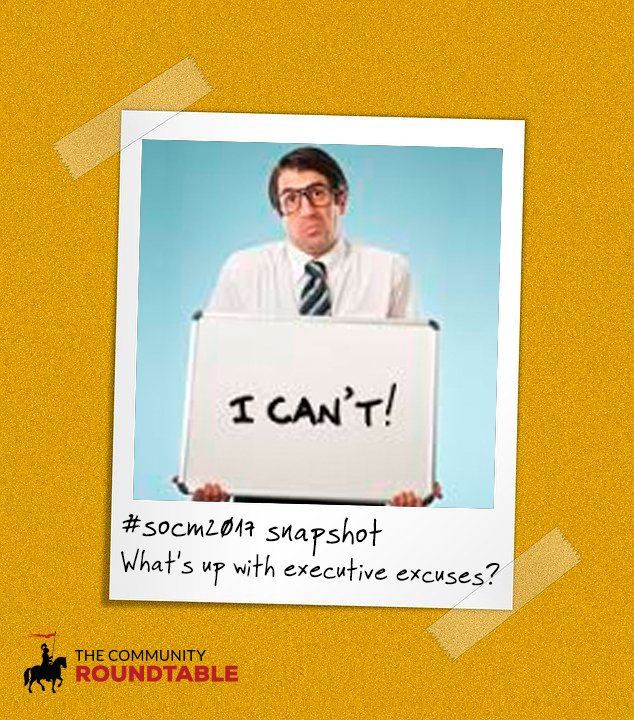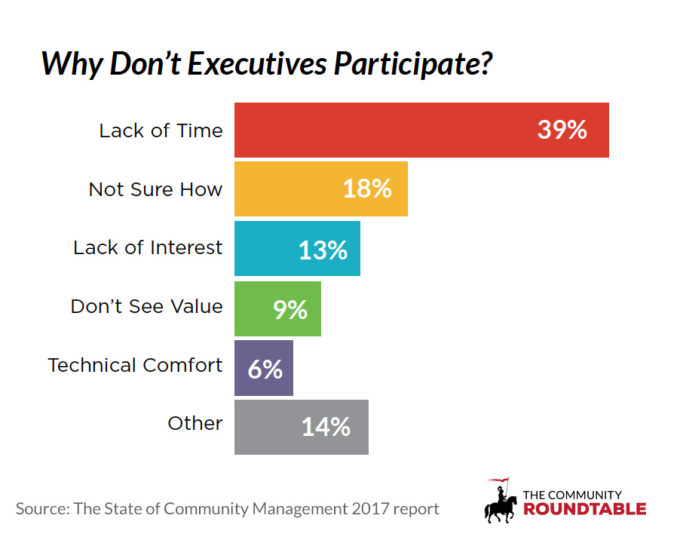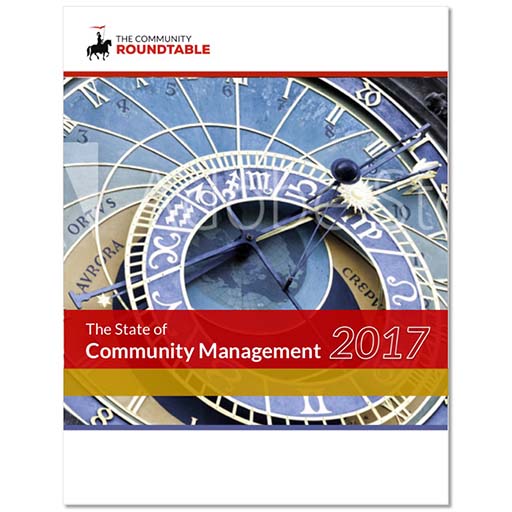Executive engagement has long been considered a critical element of community growth.
 But getting executives to be truly involved in communities has been a tremendous challenge for community managers.
But getting executives to be truly involved in communities has been a tremendous challenge for community managers.
So what’s keeping executives from jumping in, even when they think community is a critical opportunity? We asked the respondents to this year’s State of Community Management survey, and found the biggest obstacle was time.
Executives in 2017 say they just don’t have the time to get involved. 39 percent of our respondents said it was the most common excuse used by executives who weren’t taking part in community.
What can you do about it?

TheCR has found two approaches can often address the time concern. The first is for the community professional to highlight the ways that community can replace current management tasks, rather than add to them.
For example, in a culture where meetings can occupy hours of the day, showing a manager how the community could replace status meetings with updates in the community might raise an eyebrow of interest.
The second approach is to make community participation as time-efficient as possible, by starting with community approaches for which you can create templates, or can build into specific short times during the executive’s schedule.
The other regularly mentioned reason for a lack of executive engagement is a lack of knowledge about how to best utilize the community. This is where you have to start small and simple, giving the executive easy ways to start using the community as a tool for listening, finding information or gathering intelligence that gets them into the lower levels of the Community Engagement Framework.
So, if you’re trying to get an executive engaged, find out what is holding them back and target that limitation in your strategy to move them forward, by saving them time, giving them skills, and showing them the value of community.
The data show it’s worth a little extra effort.
Haven’t downloaded your copy of the SOCM 2017 yet? Get it now!


